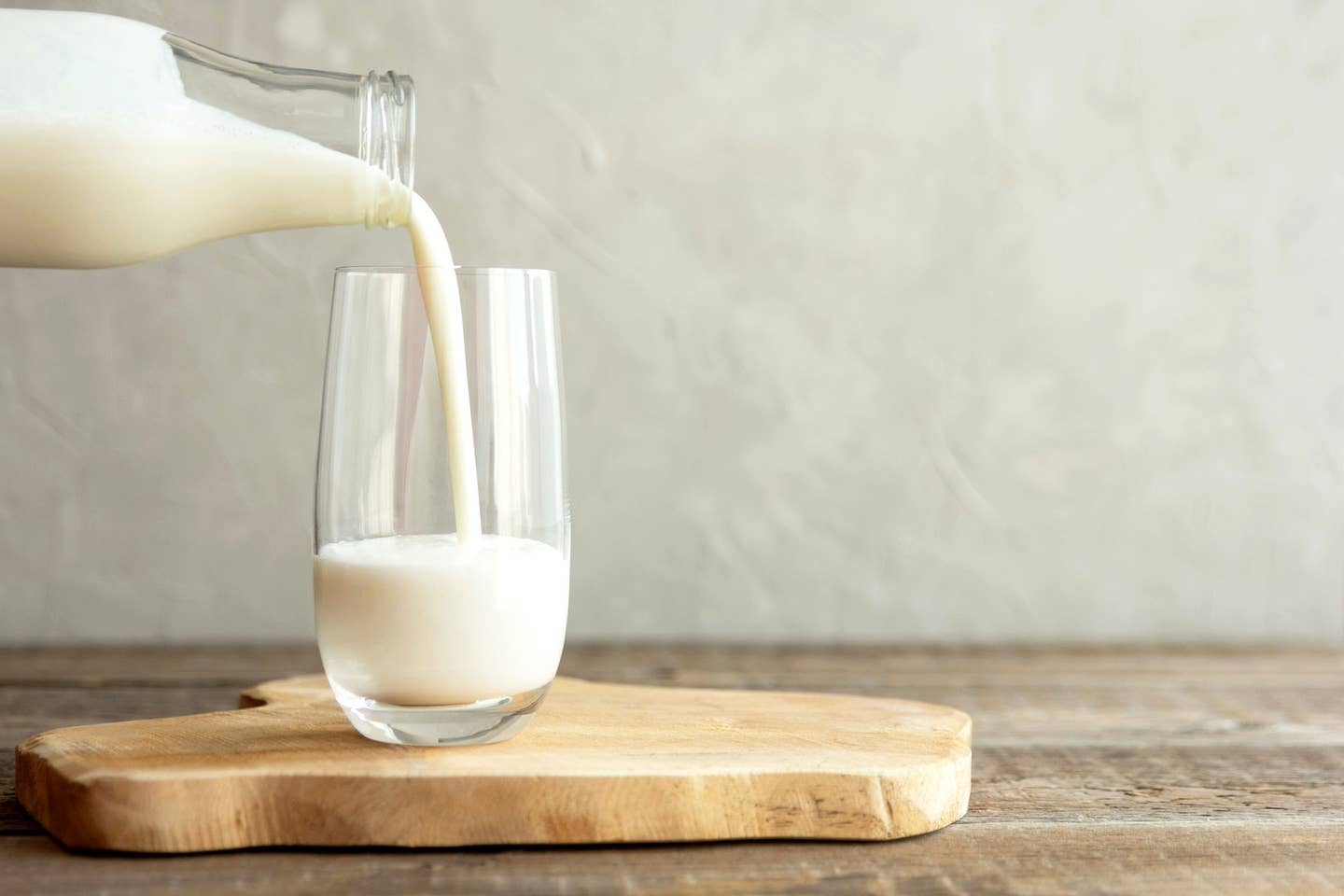
Could You Be Lactose Intolerant and Not Know? How to Tell, From an RD
68 percent of the world's population is lactose intolerant. While this shocking statistic may not include you, your body still may experience adverse reactions after consuming dairy. One way to know if you're sensitive or allergic to dairy products is to pay attention to how much mucus your body is producing. It may seem like a lot of celebrities and professional athletes are ditching dairy to help their sinuses right now, and mucus is one big reason why.
Three years ago, sisters Chloe and Halle Bailey, known as the pop star duo Chloe x Halle (signed to Beyonce’s record label) and stars of the sitcom series Grown-ish, shared in an interview with PETA that since going vegan, they’ve been able to improve their vocal performances.
The duo reported no longer experiencing “that extra mucus buildup all the time.” Good thing, since younger sister Halle is currently filming a live-action adaptation of The Little Mermaid, as Princess Ariel. One can only imagine how Princess Ariel’s bargaining power with the sea witch would have been impaired with too much phlegm in her throat.
In basketball news, NBA Milwaukee Bucs star Jrue Holiday recently told The Beet that after he and his wife, professional soccer player Lauren Holiday, found out their daughter was lactose intolerant, they pivoted to plant-based dairy alternatives, discovering Ripple drinks as a suitable alternative for the whole family. After making the switch, he noticed improved recovery times after games, adding that it also helped with nasal issues. “Sometimes when I drink dairy, I get a lot of mucus build-up, and since I've been off dairy it's been gone. I feel better, lighter, and I have more energy,” he says.
Novak Djokovic, currently ranked as the No. 1 tennis player in the world, reported issues with persistent allergies, even undergoing surgery to help him breathe better. When the combination of changing his workouts with nasal surgery didn’t bring relief, he sought help from a doctor who analyzed his diet and discovered a list of foods he was reacting to, including gluten, dairy, and refined sugar. After making dietary changes and cutting out dairy, Djokovic reported feeling better immediately.
While these may seem like anecdotal stories, these competitors aren’t alone. Hundreds of athletes comprise a movement called “Switch4Good,” spearheaded by Olympic cyclist Dotsie Bausch, who in 2018, after seeing a milk commercial touting 9 out 10 Olympians grew up drinking milk, rebutted with a commercial featuring dairy-free Olympians proudly saying they went dairy-free to improve their health, breathing, and performance.
Could these claims of feeling better and being able to breathe better after making the switch to dairy-free be an intolerance to lactose found in milk, a cow’s milk allergy, or something else? Here’s what the research says.
What's the Difference Between a Lactose Intolerance and a Milk Allergy?
According to the National Institute of Diabetes and Digestive and Kidney Diseases, about 68 percent of the world’s population has some degree of lactose intolerance. People who are lactose intolerant may not produce enough of the enzyme lactase needed to digest lactose—a type of sugar found in milk. Symptoms can kick in within just a few hours of consuming dairy, and include bloating, gas, diarrhea, nausea, abdominal pain, stomach rumbles, and vomiting. Mucus production, however, is not a known symptom of lactose intolerance. But what about a milk allergy?
An allergy to milk is different than lactose intolerance and can have more serious consequences. It’s also one of the most common allergies in infants and young children. With a milk allergy, the immune system perceives the protein found in milk as an invader, signaling chemicals called histamines that cause allergic symptoms, such as wheezing, breathing problems, anaphylaxis, vomiting, hives, and swollen lips. Research shows that milk allergies in young children are generally resolved before adulthood, and less than .5 percent of adults are affected. However, according to the Mayo Clinic, children who have a milk allergy are at higher risk for developing hay fever, which can have symptoms such as nasal congestion, runny nose, sneezing, and fatigue.
Side note: For those suffering from a milk allergy, the two main proteins in milk are casein and whey, which can also hide out in a lot of other foods, such as cookies, crackers, even non-dairy creamers, so if you’re avoiding milk due an allergy, be sure to check labels carefully.
The Connection Between Dairy and Mucus Production
Science over the years is mixed on whether or not there’s a correlation between dairy consumption and that uncomfortable feeling of phlegm in your nose and throat. One early study from 1988 investigated mucus production by weighing tissues of participants with rhinovirus-2 (a virus that can give you all the common cold systems, such as a runny nose or sore throat) while also recording their milk and dairy intake. The results indicated no significant association between dairy intake and the weight of mucus secretion, but in an initial questionnaire, 27.5 percent of subjects reported reducing dairy intake when they had a cold and 80 percent of them said it was because they thought it produced additional mucus, confirming that people anecdotally believe in a cause-and-effect relationship between dairy consumption and feeling stuffed up. That same group also reported more congestion systems than the group not avoiding dairy, but still, no significant association was determined.
A study published in 2019 examined this self-reported effect of dairy vs. non-dairy on mucus production. In a double-blinded design, 108 participants were asked to score their nasopharyngeal secretions on a scale from one to 100, not knowing if they were part of the non-dairy or dairy supplementation group. The dairy-free diet was associated with a significant reduction in self-reported mucus secretion.
But it was an earlier 2009 study that explored the actual mechanism behind dairy-induced mucus production. Researchers hypothesized that it may be a chain of circumstances that leads to mucus overproduction. First, the person has to be consuming A1 milk as opposed to A2 milk. Second, an additional protein shown to increase mucus production, called beta-casomorphin—a peptide hypothesized to cause inflammation—has to be in circulation, and finally, certain tissues in the airways have to be inflamed to activate the gene expression responsible for excess production. This research helps explain why a subgroup of people notice improvements in respiratory tract mucus production as well as symptoms related to asthma when they remove dairy from their diet.
Bottom line: There is science out there to support the claim that dairy consumption may be related to mucus production. If you experience this same sensation after a glass of milk or bowl of ice cream, consider eliminating dairy and take note of how you feel.
Casein, Whey and the Connection to Lactose Intolerance
Cow’s milk contains a variety of types of proteins such as casein and whey—A1 and A2 proteins are a type of casein. The A1 variant is believed to release greater amounts of beta-casomorphin, which may lead to an influx of digestive problems and inflammation. Most cow’s milk sold in stores contains both A1 and A2 proteins, but today you can find A2 milk, which contains no A1.
A study published in 2014 tested the theory behind A1 distress with a double-blind, randomized crossover study. Subjects who were tested to be lactose-intolerant were either given milk containing only A2 or milk with both A1 and A2 for two weeks. After a washout period, subjects were then given the opposite for another two weeks.
Researchers concluded that the consumption of milk containing A1 was associated with greater gastrointestinal distress and more inflammation-related biomarkers; whereas the consumption of A2 did not exacerbate these symptoms in participants.
More From The Beet






